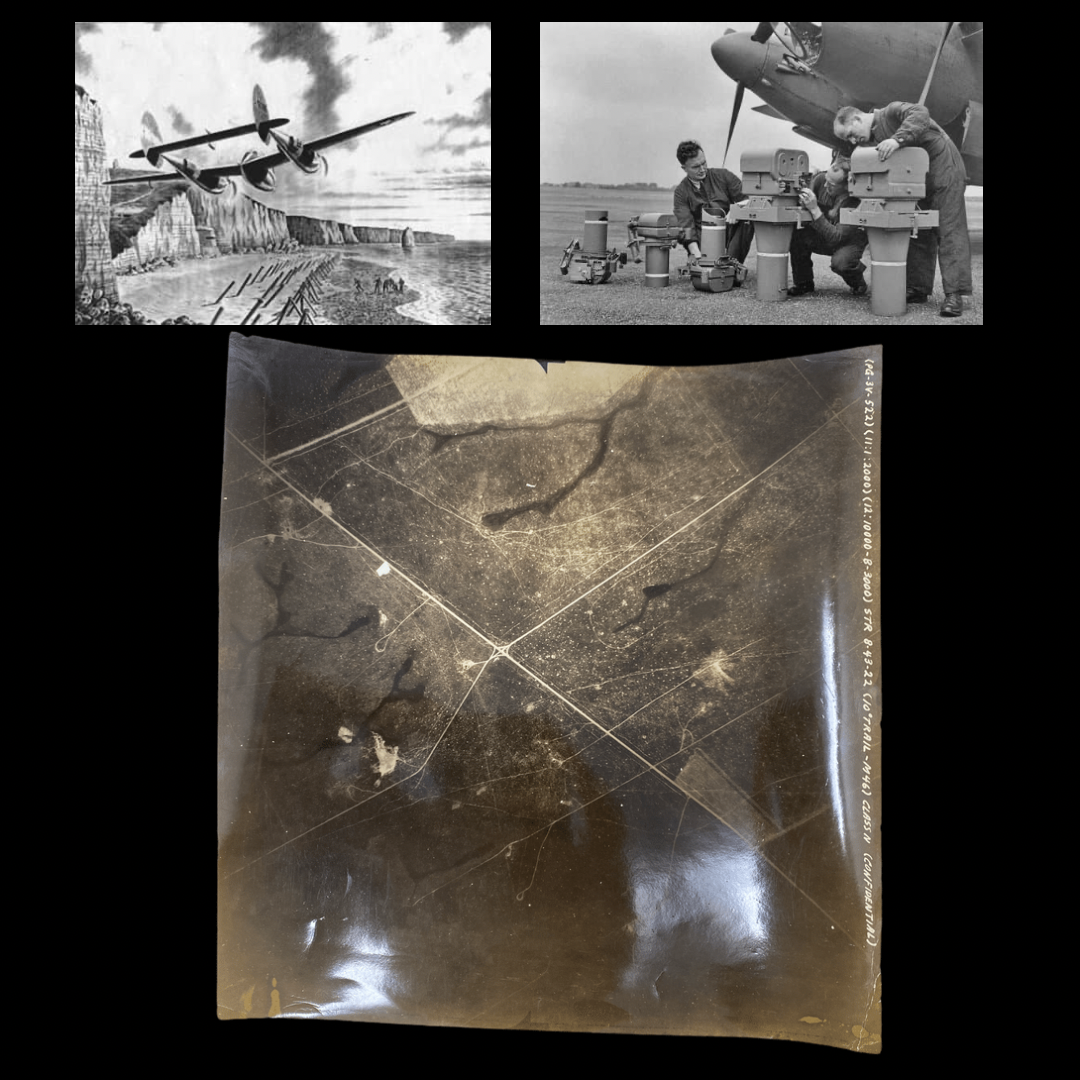WWII Aerial Photograph 33rd Photo Recon Squadron CONFIDENTIAL Sgt. Wroblewski












WWII Aerial Photograph 33rd Photo Recon Squadron CONFIDENTIAL Sgt. Wroblewski
Size: 9 x 9 inches
This exclusive 'CONFIDENTIAL' aerial photograph comes from the collection of Sgt. Joseph F. Wroblewski of the 33d Photo Reconnaissance Squadron - U.S. Army's 9th Air Force.
These materials are dated as early as 1943 when Sgt. Wroblewski and his squadron were training for what would be one of the most dangerous, secret, and important early missions of WWII. Their mission: Equipped with unarmed long-range Lockheed F-5 Lightnings and mounted aerial reconnaissance cameras instead of machine gun, the 33rd P.R.S. engaged in low altitude tactical reconnaissance over the Normandy Beaches of France prior to the Allied invasion on D-Day, June 6th, 1944. This aerial reconnaissance photo is dated August 22 of 1943 and comes from one of the practice aerial combat missions used to train those exact pilots, camera operators and crew to produce clear and accurate images of targets and locations from the air. This mission is believed to have been to capture a clear and concise image of the crossroad. While later this crew would be tasked with fly much lower missions just above the D-Day Normandy beaches, accurate training photos like this were critical to their later mission success. Without this photo and other training photos from the squadron the Allies would not have had anywhere near the intelligence they did with their photos of the German defenses of Utah and Omaha.
Owning this aerial photograph is like owning the practice maps and practice diagrams from the LCI and landing craft operators! This aerial photograph comes from an infamous WWII squadron with an amazing and often UNTOLD contribution to WWII and the D-Day landings.
Throughout WWII Pvt. Wroblewski (1943) worked his way up the ranks to Sgt. Wroblewski as a aerial camera repair operator for the 33rd P.R.S. The maintenance of these cameras was crucial for the squadrons successes. The highly classified aerial photos taken by the cameras prepared by Sgt. Wroblewski paved the way for Allied victory in France and gave the Allies a strategic insight for the opening Allied amphibious assault of the Normandy beaches his cameras photographed months and weeks prior. Afterwards, his squadron engaged in highly dangerous unarmed reconnaissance of Northern France, the Low Countries, and Germany, the Allied armies moved west during the Northern France Campaign during the balance of 1944 and the Allied Invasion of Western Germany (Spring 1945). Sgt. Wroblewski’s aerial cameras provided battlefield intelligence primarily to the United States Third Army, however also they also flew reconnaissance missions for the United States 1st and 9th Armies as requested. Through 1944 and 1945, the men of the 33rd Photo Reconnaissance Squadron carried out aircraft operations activities such as engine maintenance and camera repair in the open fields of England, France, Belgium, the Netherlands, and Germany.